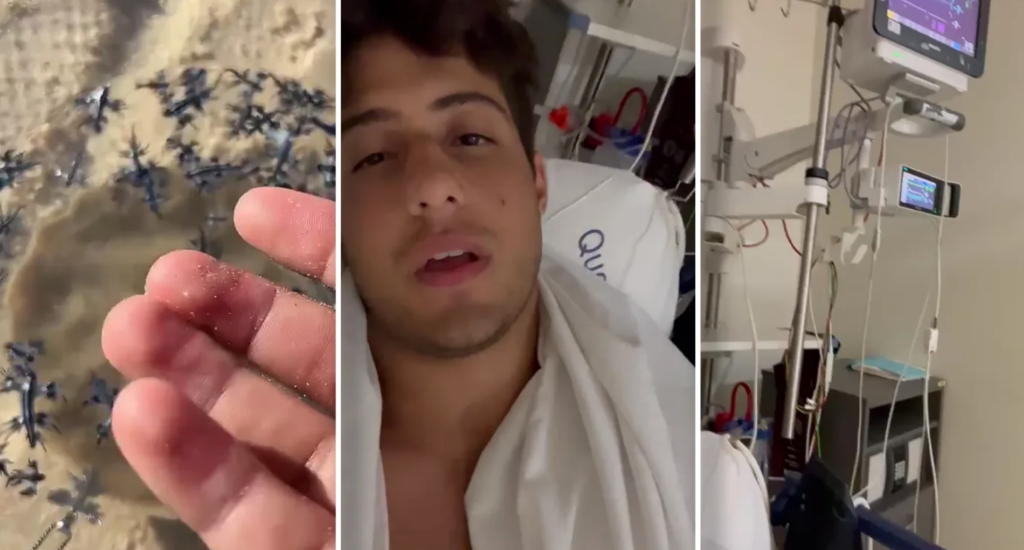Visitors to a popular Australian tourist beach were urged to exercise caution after a swarm of venomous creatures washed ashore. On Monday, hundreds of rare blue dragons, scientifically known as Glaucus atlanticus, appeared along the shoreline of Coolangatta Beach on the Gold Coast, prompting many beachgoers to reconsider their plans for a swim.
These tiny, rarely-seen sea slugs may look harmless, but they pack a powerful sting, often described as the “worst pain imaginable.” While not inherently venomous, blue dragons store venom from the bluebottles they consume, using it as a defense mechanism. A sting can cause severe pain, nausea, and vomiting, though symptoms are typically not life-threatening.
Photographer James Gourley shared his experience with The Infinite, describing the unusual sight. “I was about to take a swim when I noticed small blue dots scattered across the sand. There were hundreds of them along the beach. Many swimmers were observing them and snapping photos,” he said.
“After researching online, I discovered they were blue dragons and could be venomous. I decided not to take the risk and went swimming at a nearby beach where they weren’t present,” he added.
Professor David Schoeman from the University of the Sunshine Coast explained to Yahoo that “persistent moderate northeast winds” are likely responsible for washing the creatures ashore.
“These winds blow directly toward Coolangatta, making it the perfect condition for pushing these open-water creatures onto the beach,” he said.

Why Do Blue Dragons Wash Ashore?
Blue dragons usually live far offshore and are rarely spotted. However, large numbers sometimes appear on beaches, particularly in Queensland and New South Wales. Sightings have been reported in January of last year, as well as in 2021 and 2018.
“That’s their bad luck and your good luck because they’re absolutely amazing little creatures,” said Professor David Schoeman from the University of the Sunshine Coast in an earlier interview with Yahoo News.
He explained that these sightings are more common in late summer during La Niña years due to strong onshore winds. “These aren’t just local winds; they blow in from the deep ocean, carrying the blue dragons to shore,” he added.

Dangerous Blue Dragon Stunt Goes Viral
Last year, a man was hospitalized after attempting to rescue dozens of blue dragons washed ashore on a Gold Coast beach. He later warned others not to try the same, as his body was left covered in painful welts.
Julian Obayd, 22, shared his harrowing experience with Yahoo News Australia, saying, “My life flashed before my eyes.”
“I panicked as it kept getting worse,” he explained. “Red marks started spreading all over my body—it was pretty unsettling.”
What to Do if You’re Stung by a Blue Dragon
Surf Life Saving Australia’s Dr. Jaz Lawes advises following an adapted version of first aid for bluebottle stings if harmed by a blue dragon:
- Avoid rubbing the sting area.
- Rinse the area thoroughly with seawater (do not use freshwater).
- Immerse the sting area in hot water (no hotter than what the rescuer can comfortably tolerate) for 20 minutes.
- If hot water is unavailable or pain persists, apply a cold pack or ice in a dry plastic bag.
- Seek medical attention if symptoms continue.


